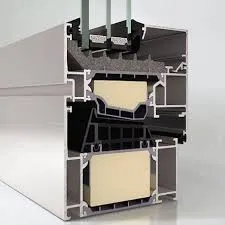door sliding roller
Sliding Door Rollers Enhancing Functionality and Style
Sliding doors are a popular choice in modern architecture, providing a seamless transition between indoor and outdoor spaces while maximizing natural light. However, their functionality greatly depends on one critical component the sliding door roller. These small yet vital parts ensure that your sliding door operates smoothly and efficiently. In this article, we will explore the importance of sliding door rollers, their types, maintenance tips, and how they can enhance your living environment.
The Importance of Sliding Door Rollers
Sliding door rollers are the mechanisms that allow the door to glide along its track. They not only facilitate movement but also contribute to the door's overall stability. A well-functioning roller system ensures that the door opens and closes smoothly, making it a hassle-free experience for users. Moreover, high-quality rollers can support the weight of your sliding door, ensuring durability and longevity. When rollers start to wear out or fail, it can lead to doors that stick, wobble, or even come off their tracks, which can be both inconvenient and potentially dangerous.
Types of Sliding Door Rollers
There are several types of sliding door rollers available on the market, each designed for specific styles and functionalities
1. Standard Rollers Typically made of plastic or nylon, standard rollers are suitable for lightweight sliding doors. They are cost-effective and easy to replace.
2. Ball Bearing Rollers These rollers incorporate ball bearings for added smoothness and durability. They are ideal for heavier doors and can handle more significant wear and tear.
3. Anti-jump Rollers Designed to prevent the door from lifting off the track, these rollers are essential for safety. They are commonly used in larger sliding doors and patio doors.
4. Self-adjusting Rollers These rollers can automatically adjust to accommodate changes in the door's position. They offer a versatile option for homeowners looking to maintain smooth operation over time.
door sliding roller

Maintenance Tips for Sliding Door Rollers
To ensure that your sliding door rollers function properly, regular maintenance is essential. Here are some practical tips
1. Cleaning Dust and debris can accumulate in the tracks and on the rollers, causing friction and hindering movement. Periodically clean the tracks with a damp cloth and use a vacuum to remove any debris.
2. Lubrication Use silicone-based lubricants on the rollers and tracks to keep them moving smoothly. Avoid using oil-based lubricants, as they can attract dirt and grime.
3. Inspection Regularly inspect the rollers for signs of wear or damage. If you notice any cracks or deformities, it’s crucial to replace them promptly to prevent further issues.
4. Alignment Ensure that the door is properly aligned with the track. Misalignment can cause undue stress on the rollers and lead to premature failure.
5. Weight Support Ensure that the door does not exceed the weight limit specified for the roller type to prevent strain and damage.
Enhancing Your Living Environment
In addition to their functional advantages, sliding doors equipped with high-quality rollers can enhance the aesthetics of your living space. They offer a sleek and contemporary look, creating a visual connection between your indoor and outdoor areas. Whether it’s a patio door that opens to a garden or a room divider that maximizes space, sliding doors can enhance your home's functionality and style.
In conclusion, sliding door rollers are a fundamental aspect of sliding door functionality. By understanding the various types available, maintaining them properly, and appreciating their role in your living space, you can ensure that your sliding doors remain an elegant and practical feature of your home for years to come.
-
Why Choose TJJ as Your Window and Door Hardware Manufacturer?NewsOct.28,2024
-
The Advantages of Cast Iron Stove Plates: A Timeless Choice for Your KitchenNewsOct.28,2024
-
Aluminium Windows Profiles: Benefits and FeaturesNewsOct.28,2024
-
Innovations in Cast Iron Panel TechnologyNewsOct.28,2024
-
The Benefits of Customizing Your Wrought Iron Fence PartsNewsOct.28,2024
-
The Immortal Legacy of Cast Iron Spears: From War to Decorative UseNewsOct.21,2024
-
 Why Choose TJJ as Your Window and Door Hardware Manufacturer?Oct-28-2024Why Choose TJJ as Your Window and Door Hardware Manufacturer?
Why Choose TJJ as Your Window and Door Hardware Manufacturer?Oct-28-2024Why Choose TJJ as Your Window and Door Hardware Manufacturer? -
 The Advantages of Cast Iron Stove Plates: A Timeless Choice for Your KitchenOct-28-2024The Advantages of Cast Iron Stove Plates: A Timeless Choice for Your Kitchen
The Advantages of Cast Iron Stove Plates: A Timeless Choice for Your KitchenOct-28-2024The Advantages of Cast Iron Stove Plates: A Timeless Choice for Your Kitchen -
 Aluminium Windows Profiles: Benefits and FeaturesOct-28-2024Aluminium Windows Profiles: Benefits and Features
Aluminium Windows Profiles: Benefits and FeaturesOct-28-2024Aluminium Windows Profiles: Benefits and Features












